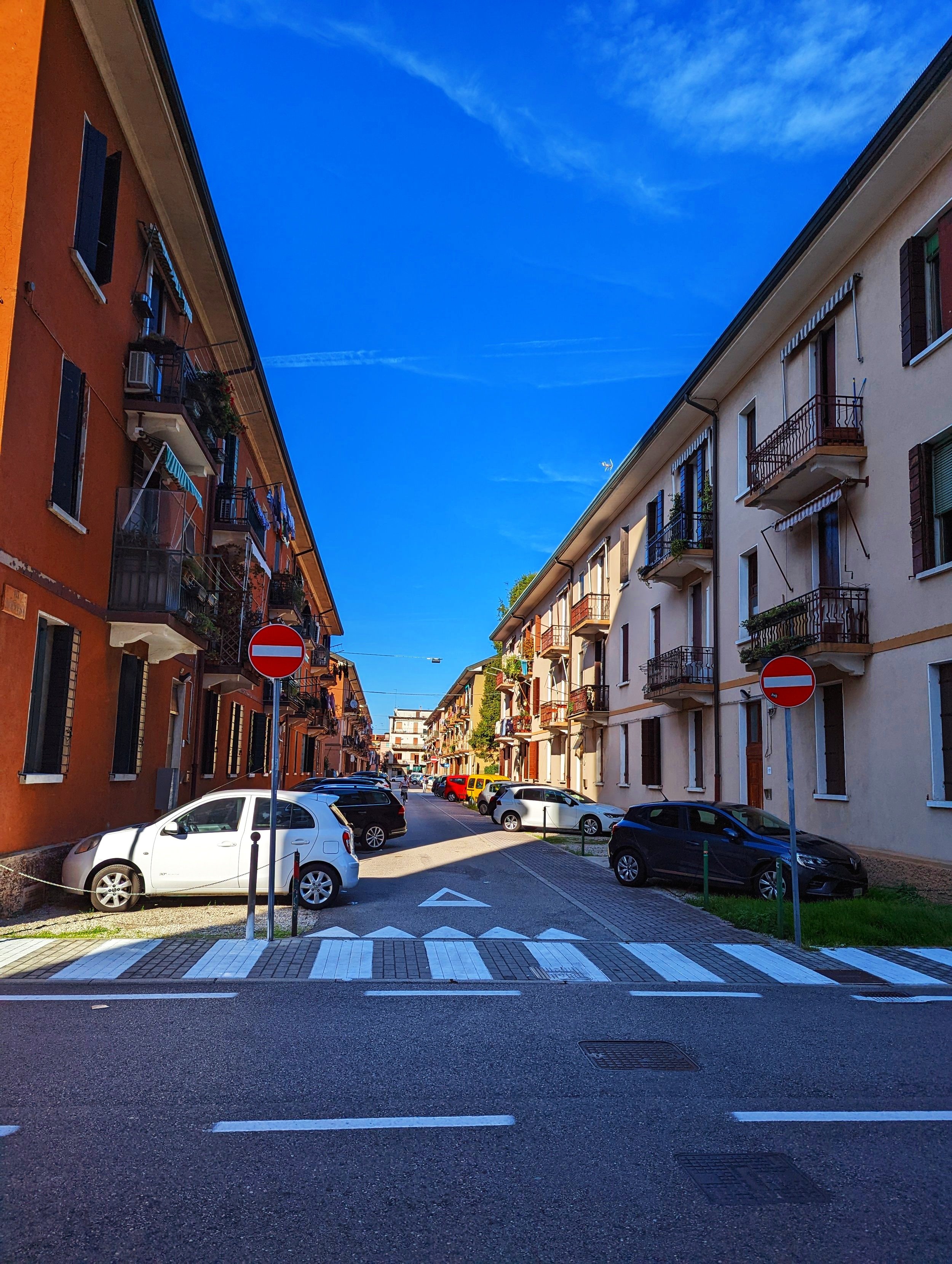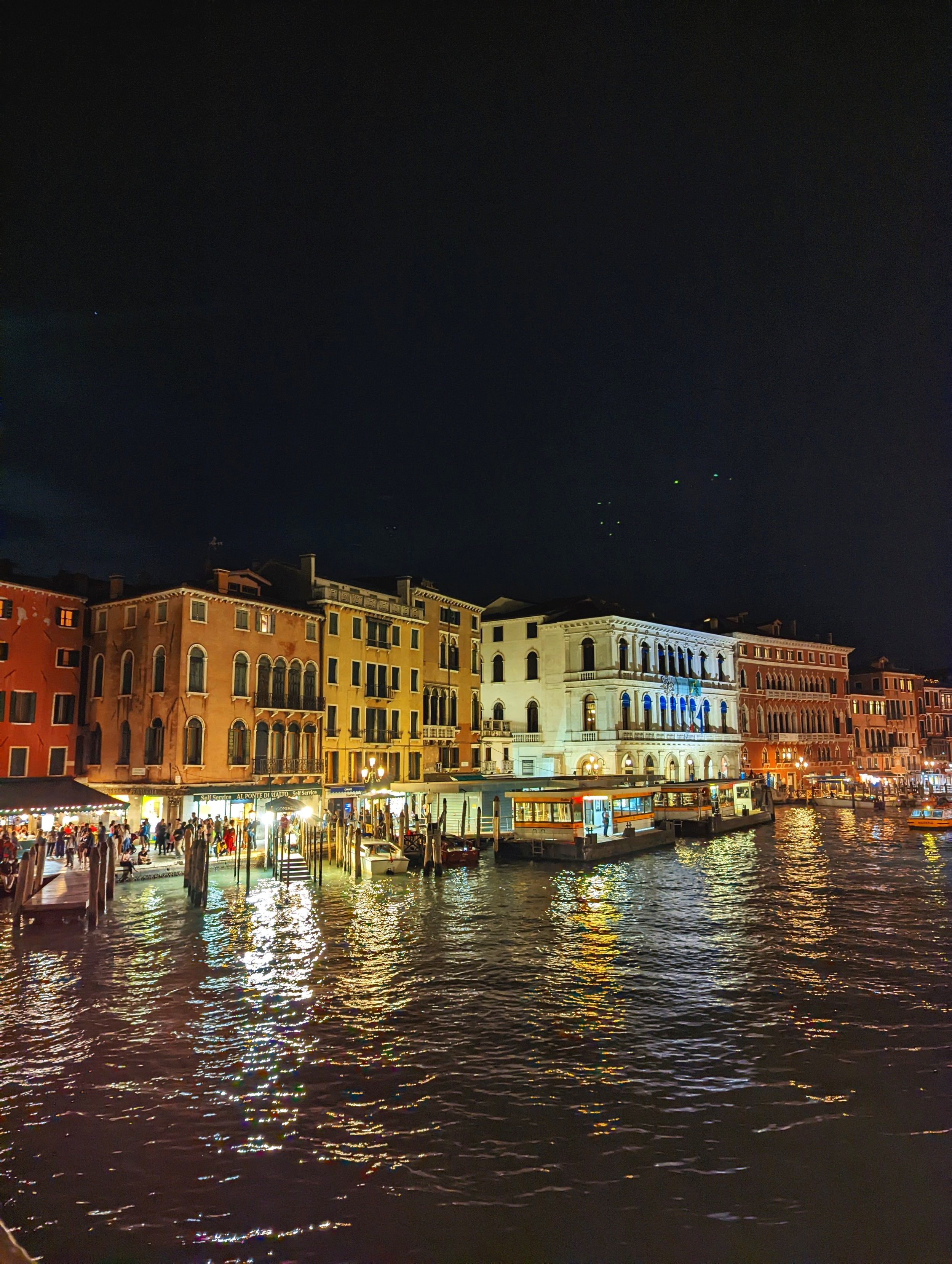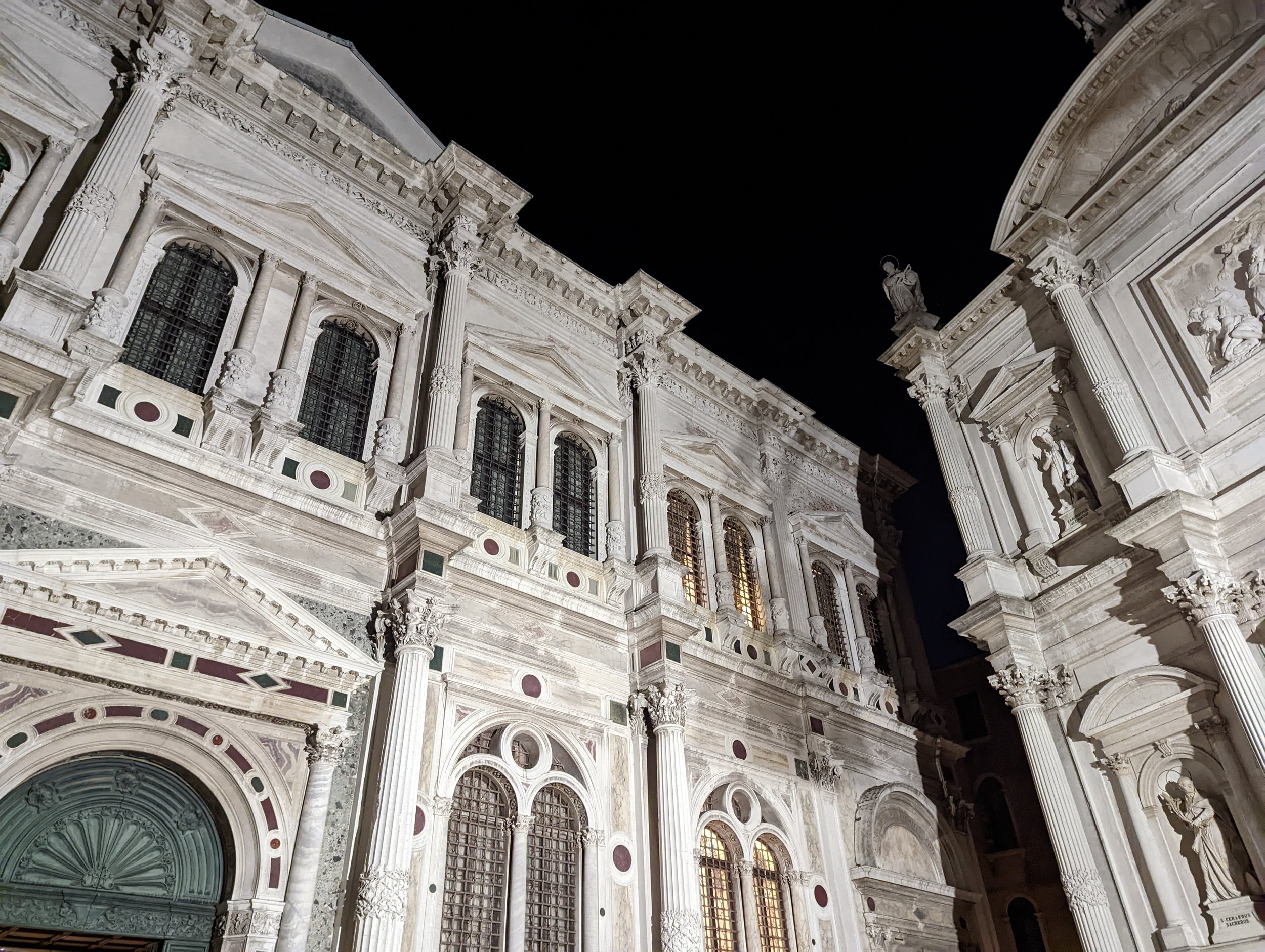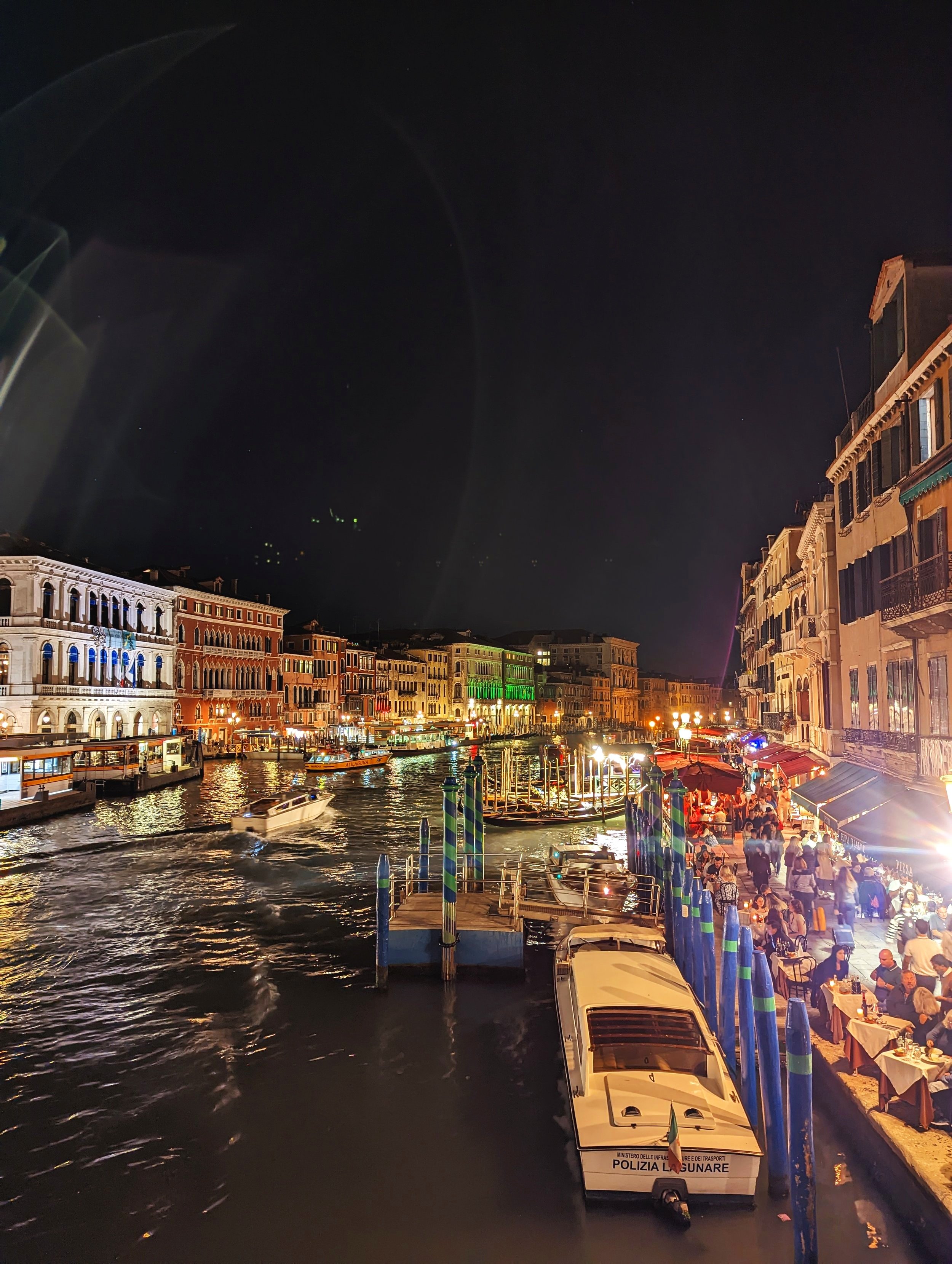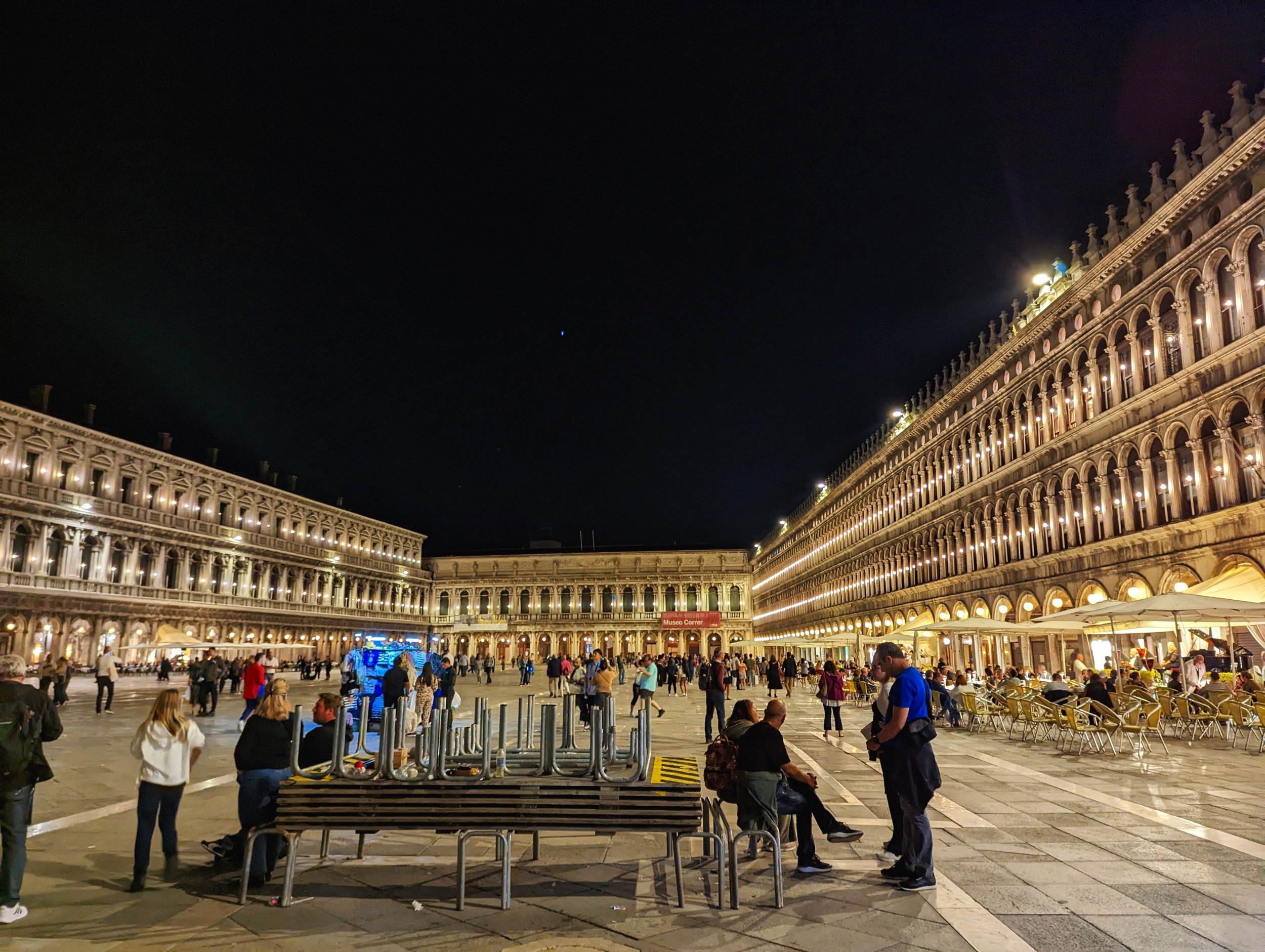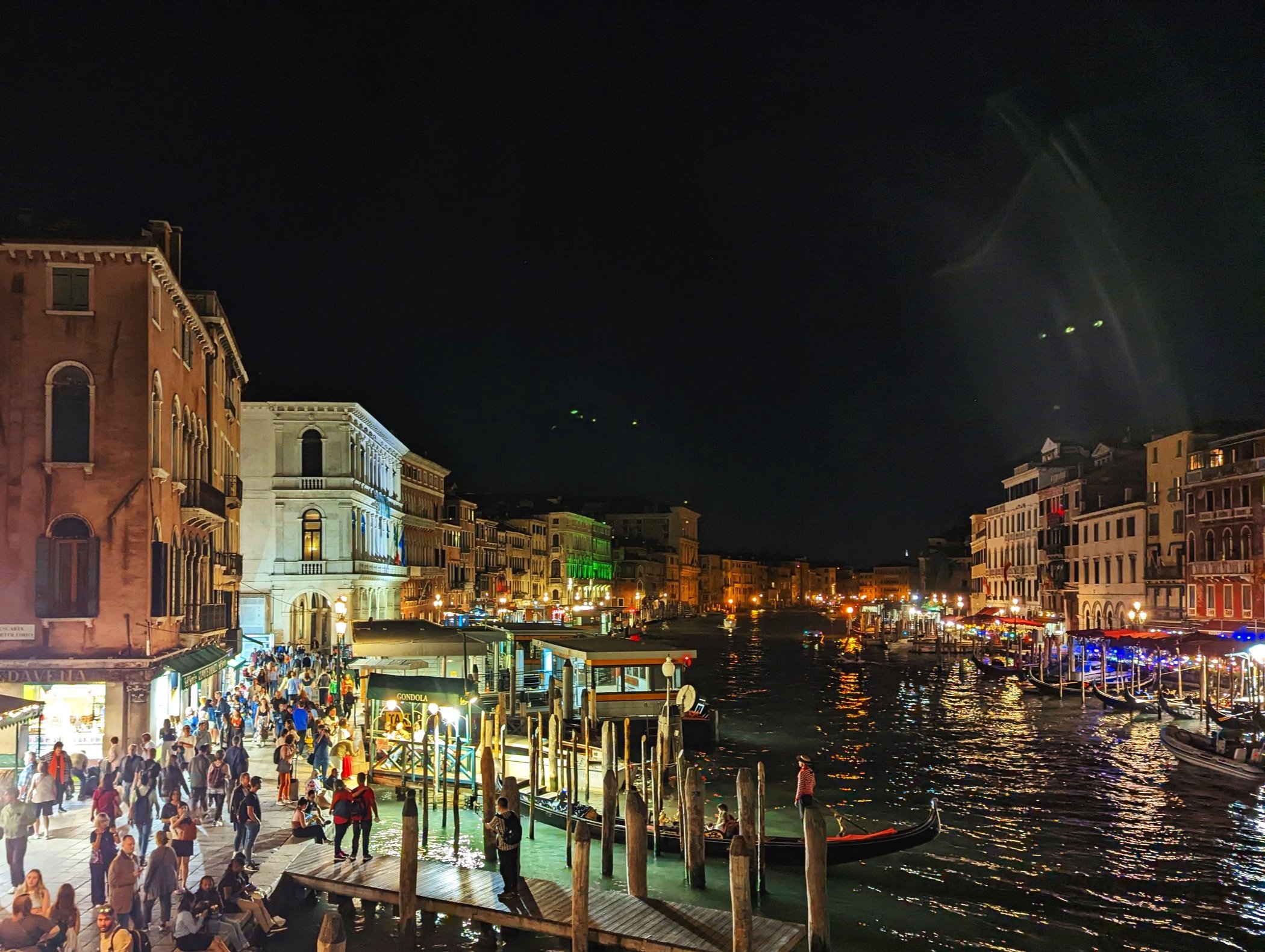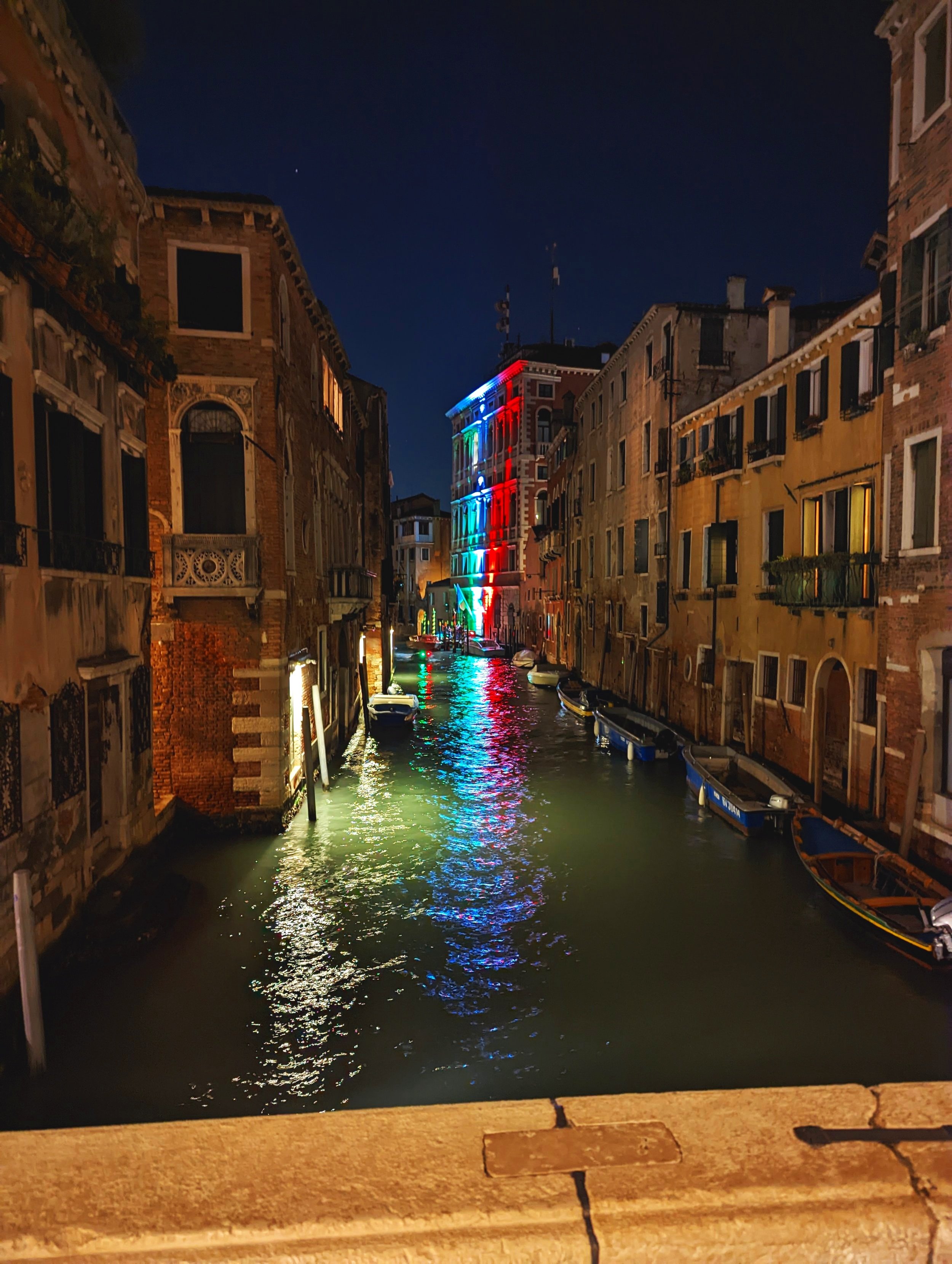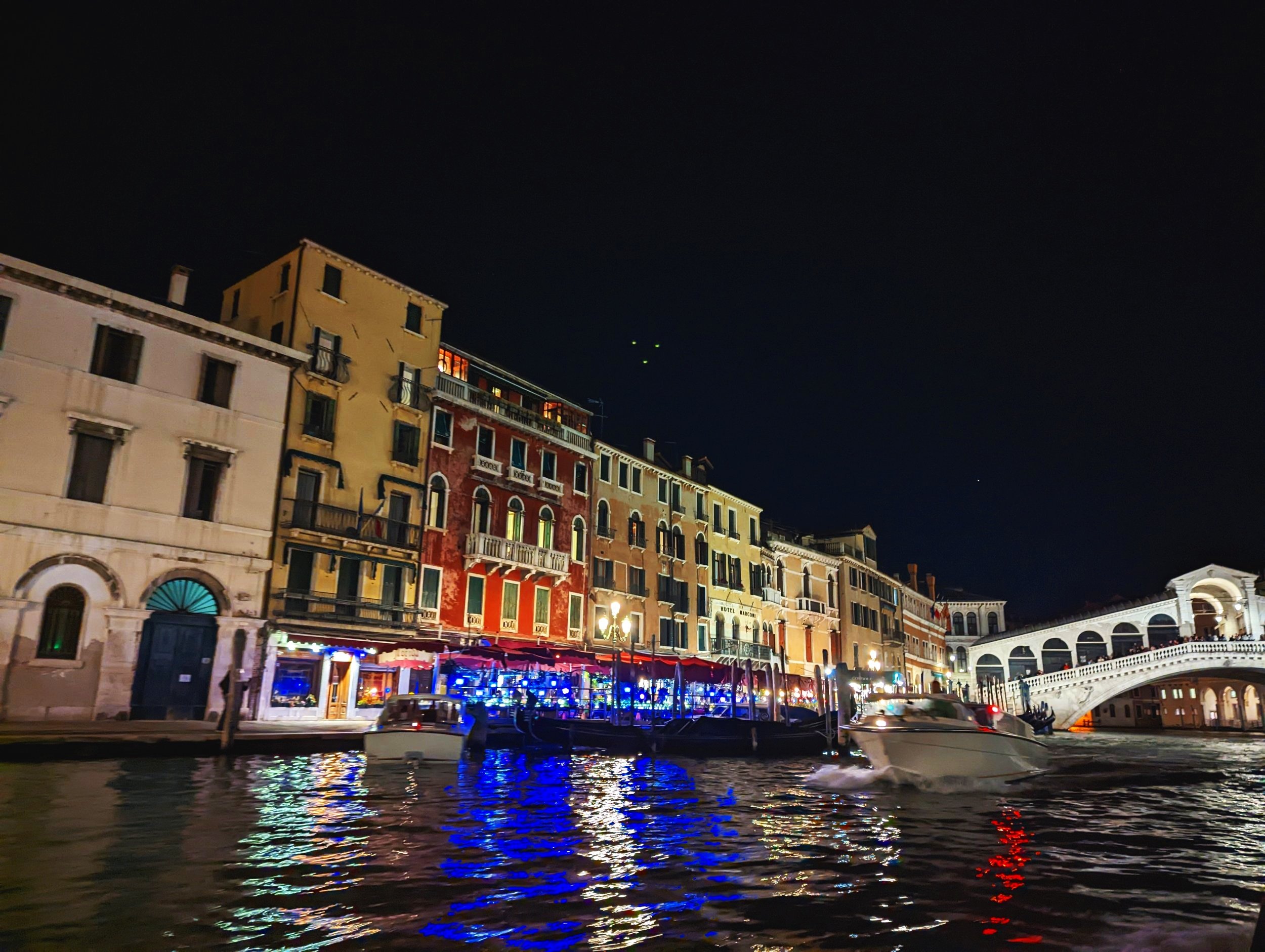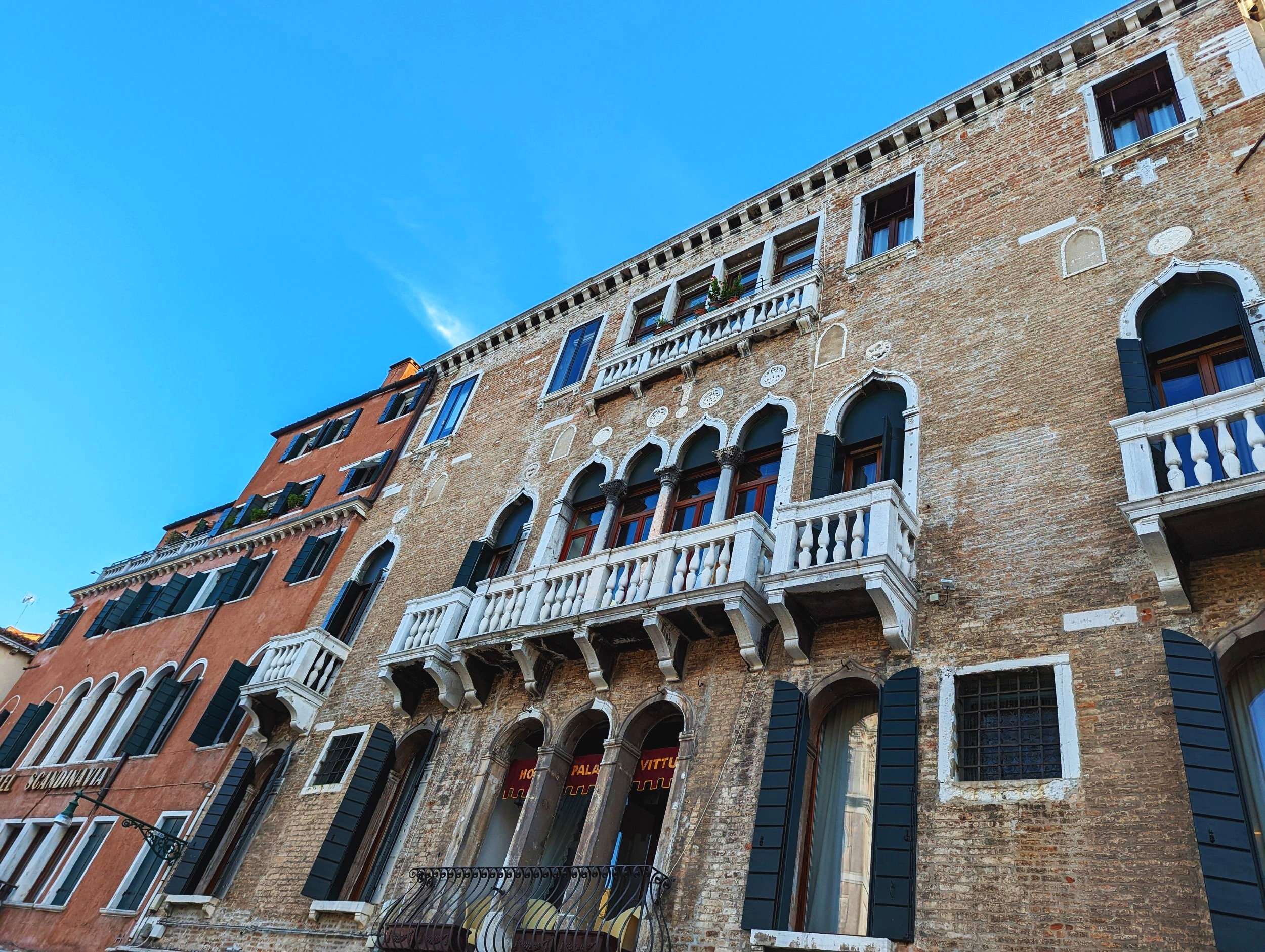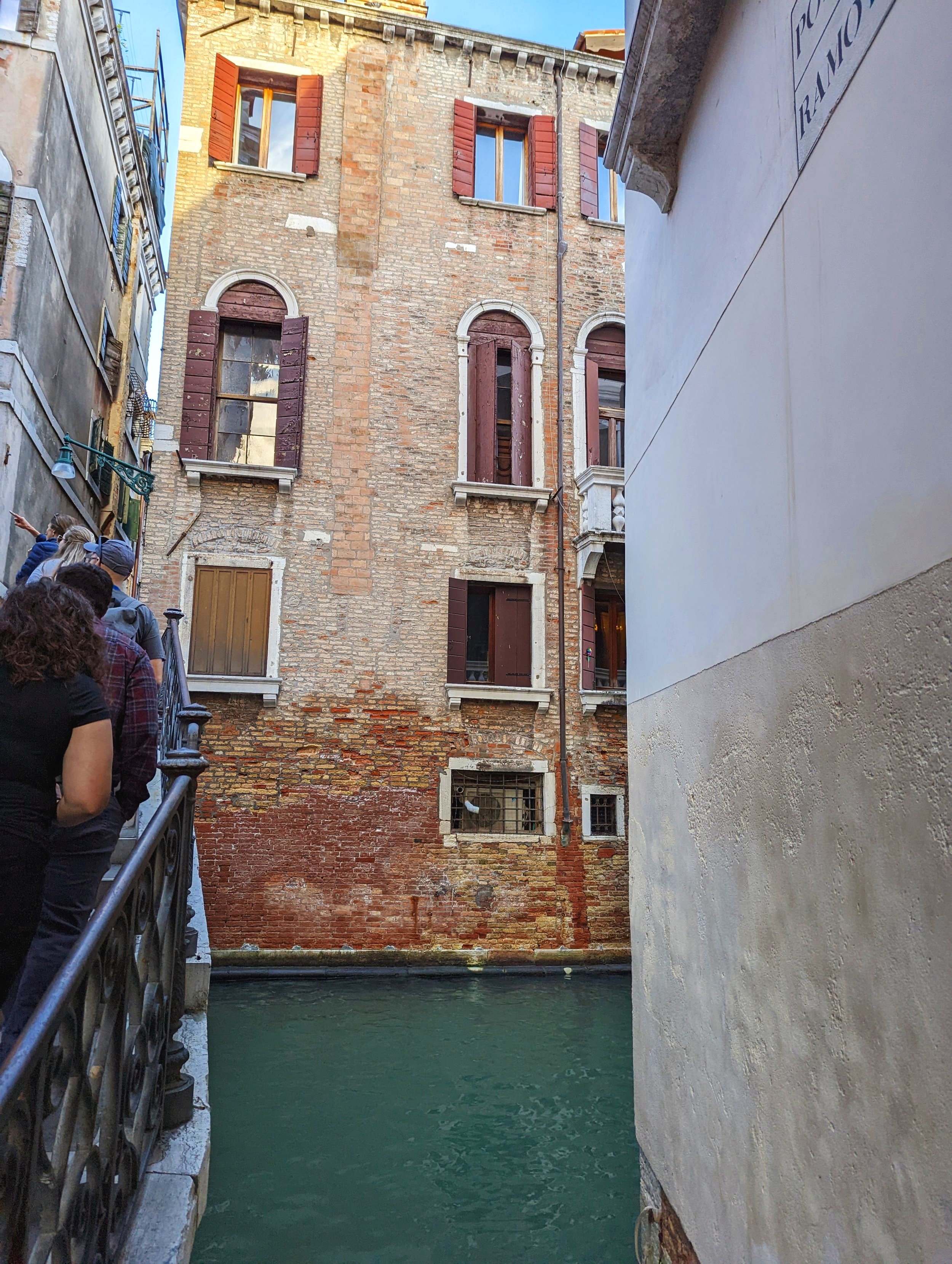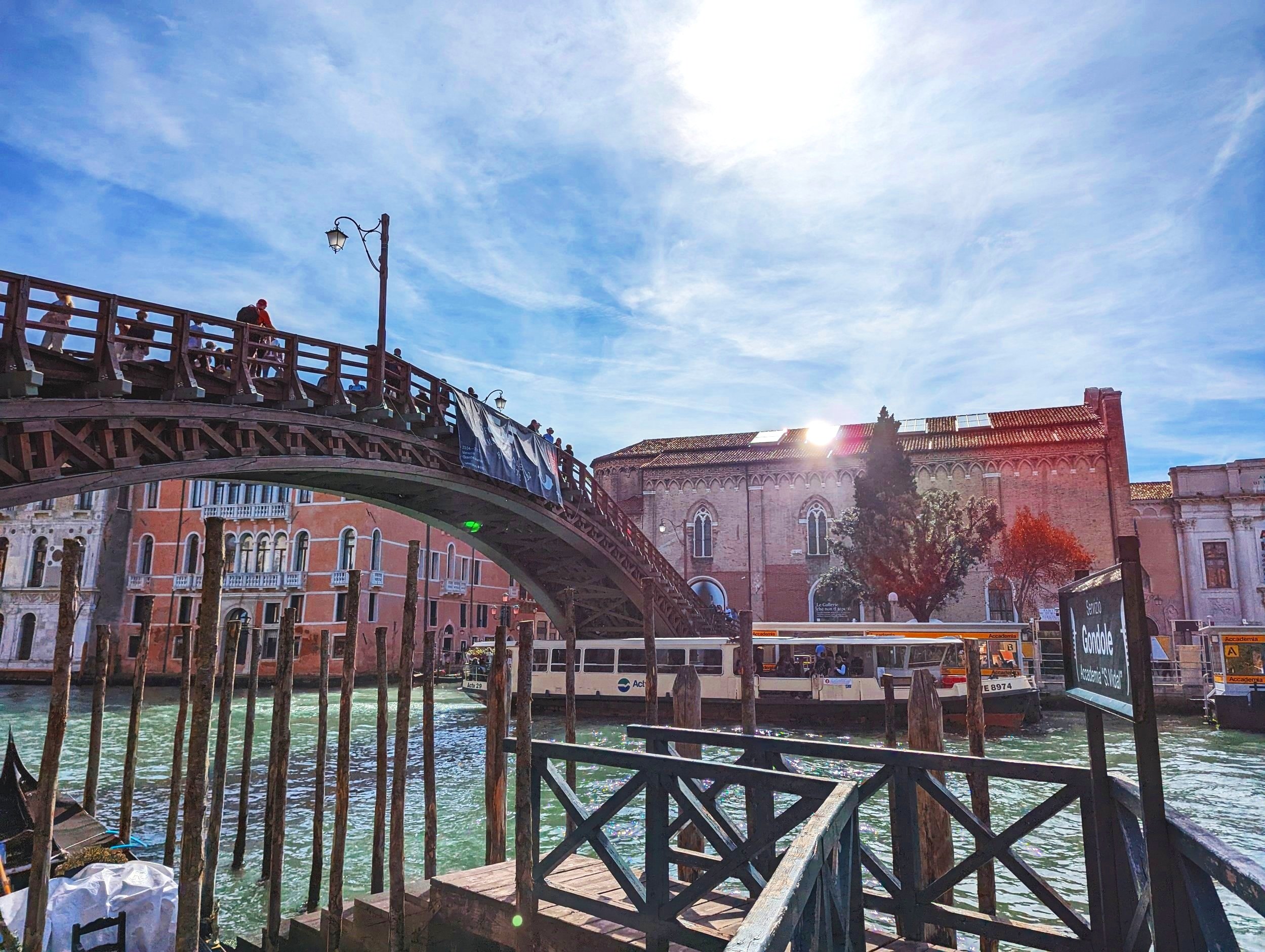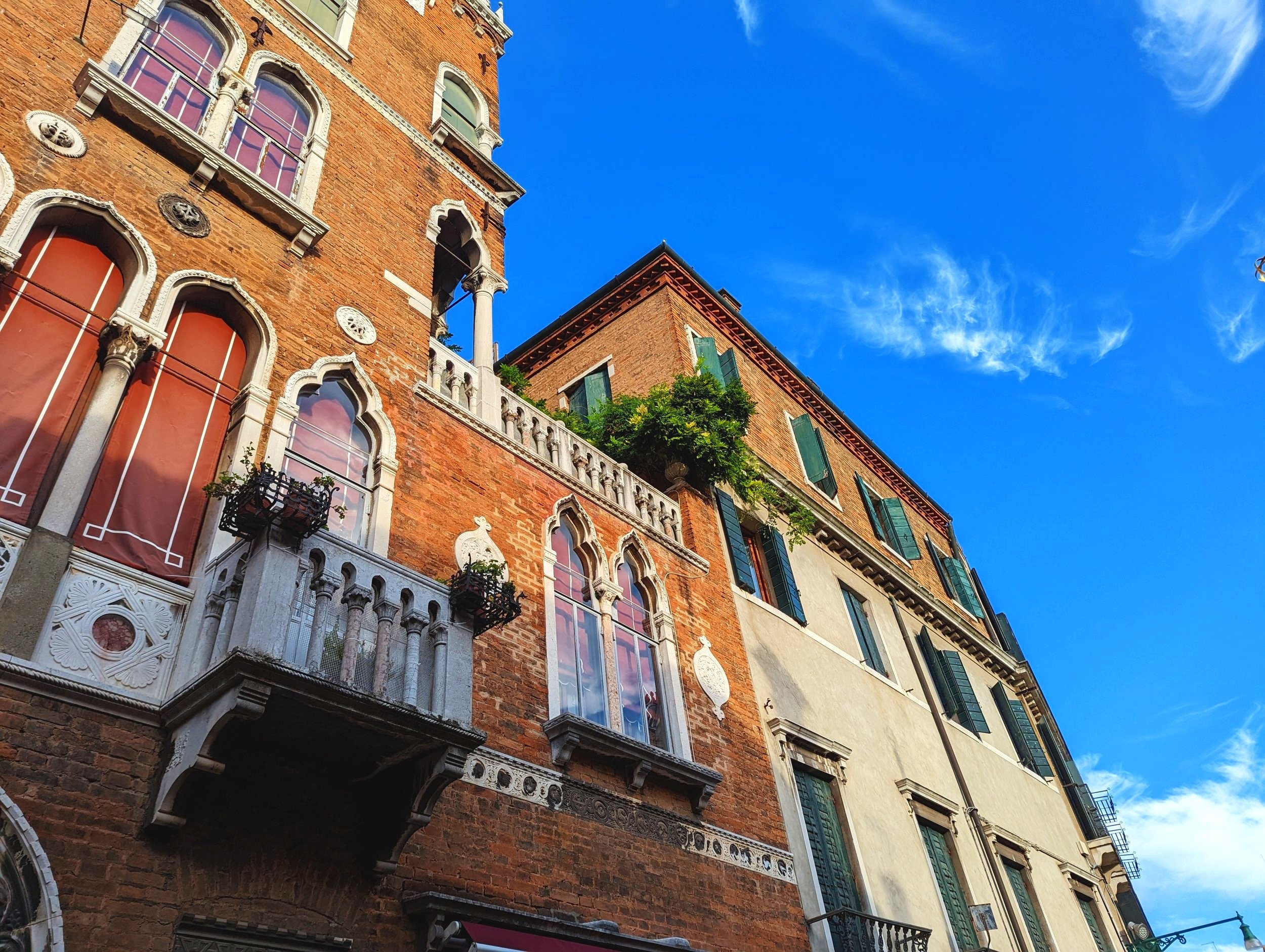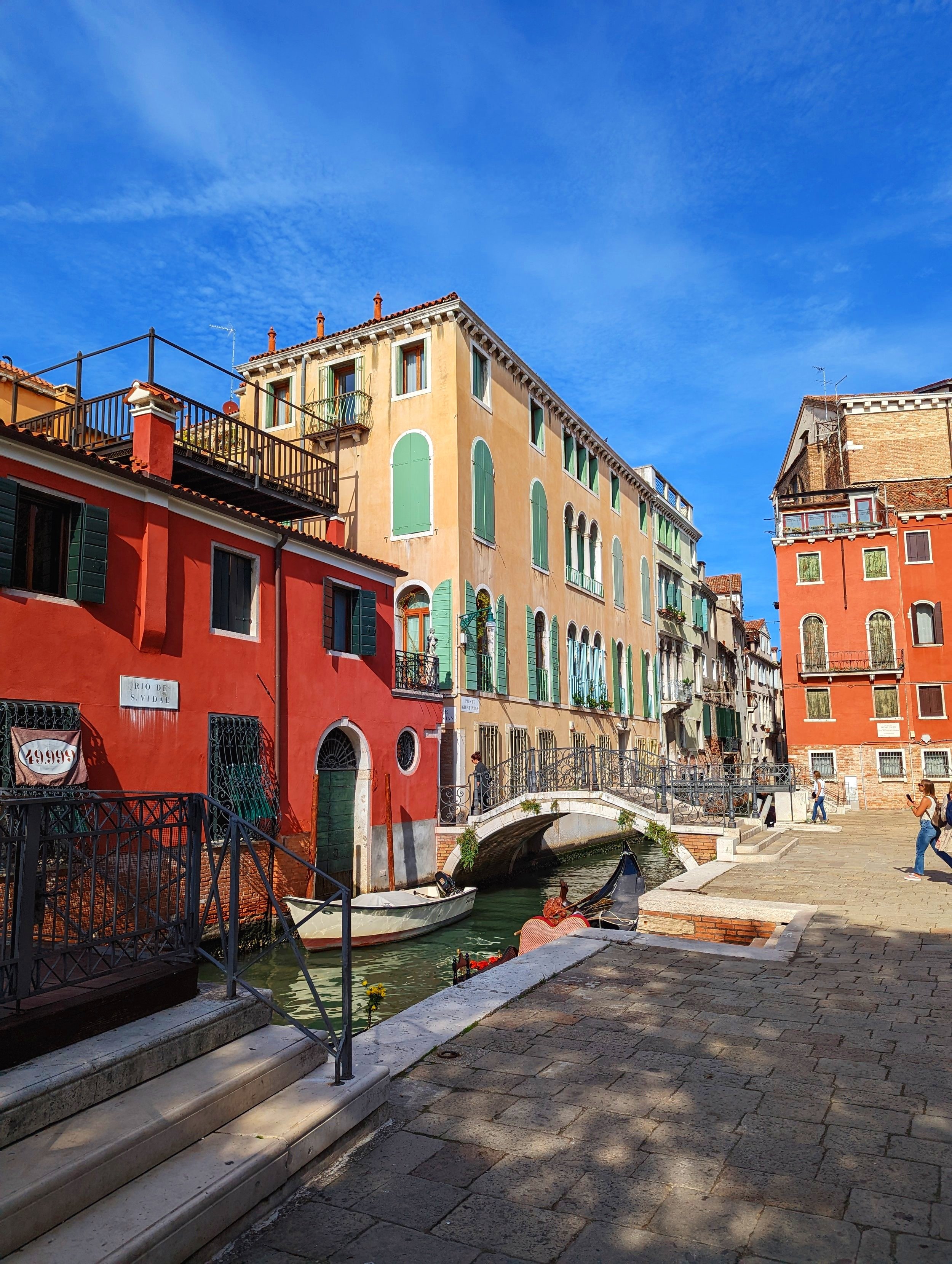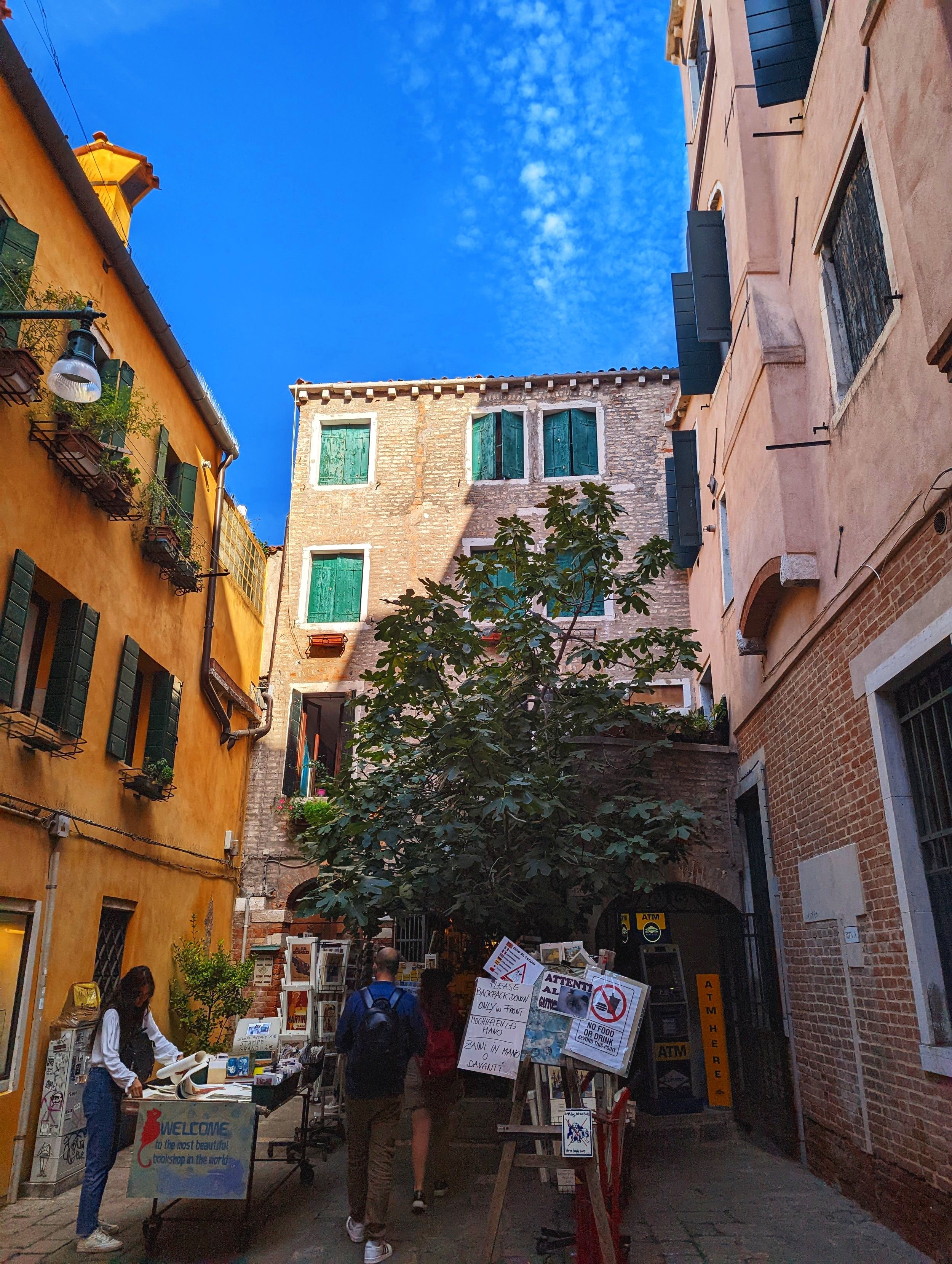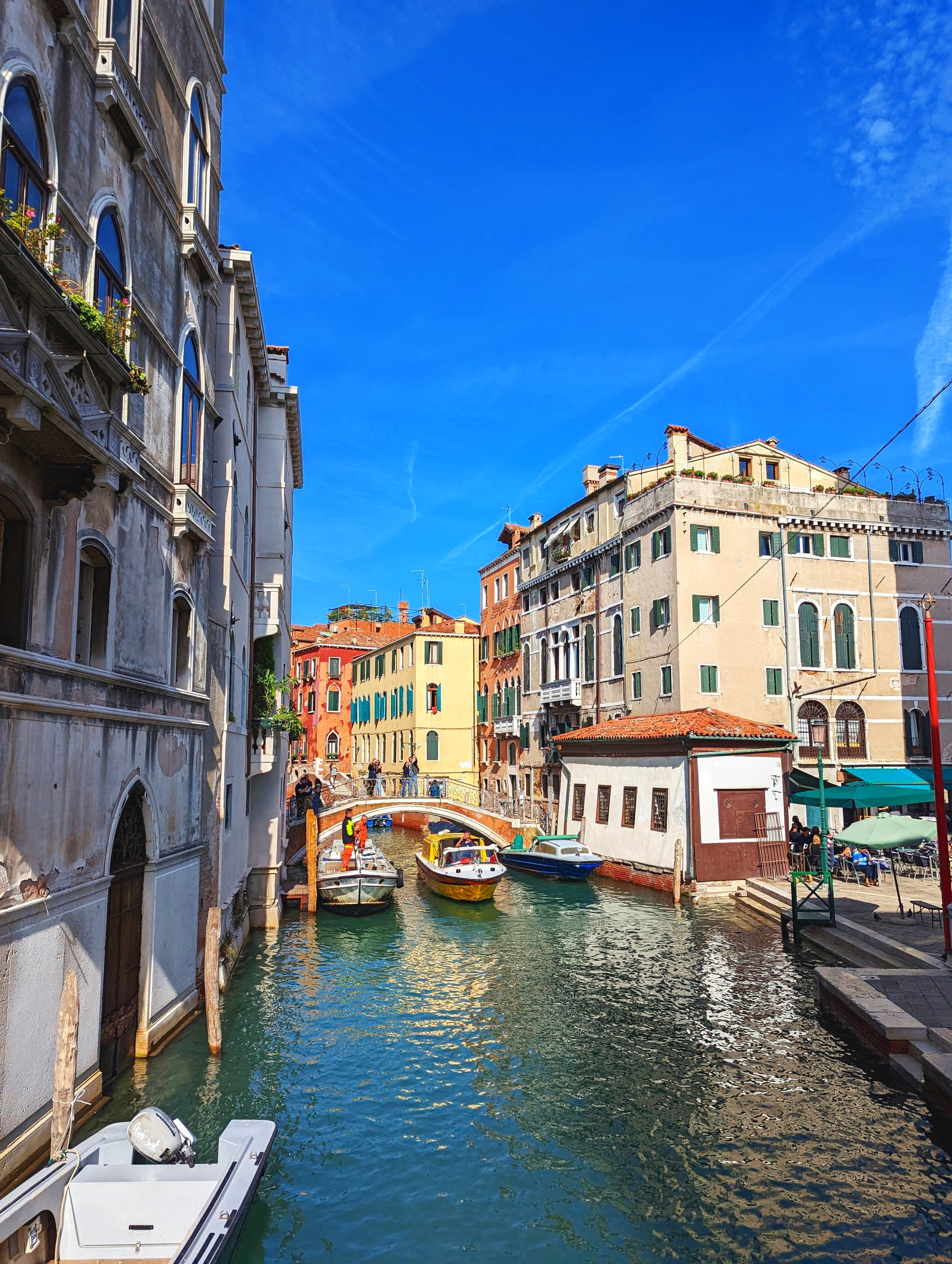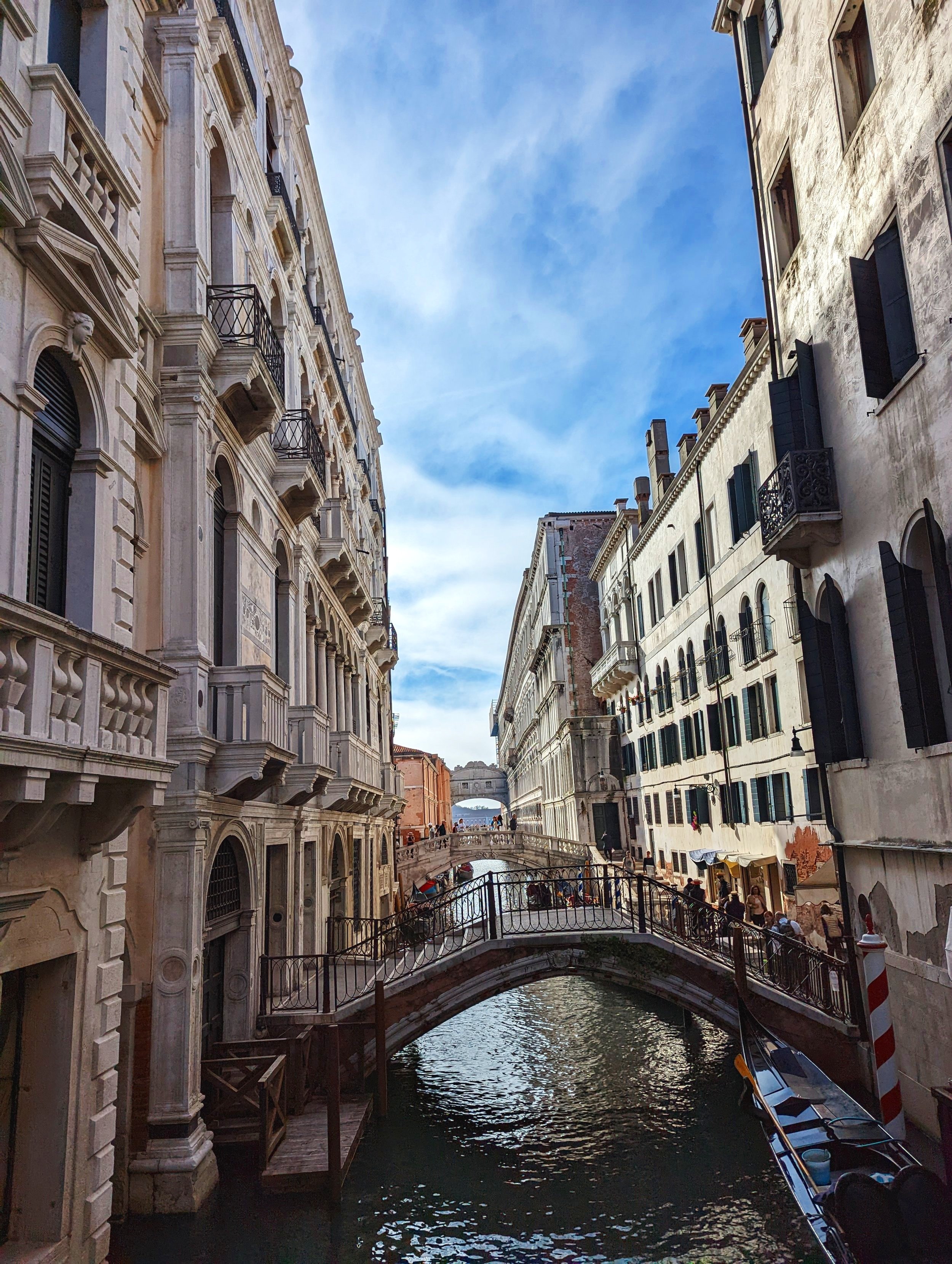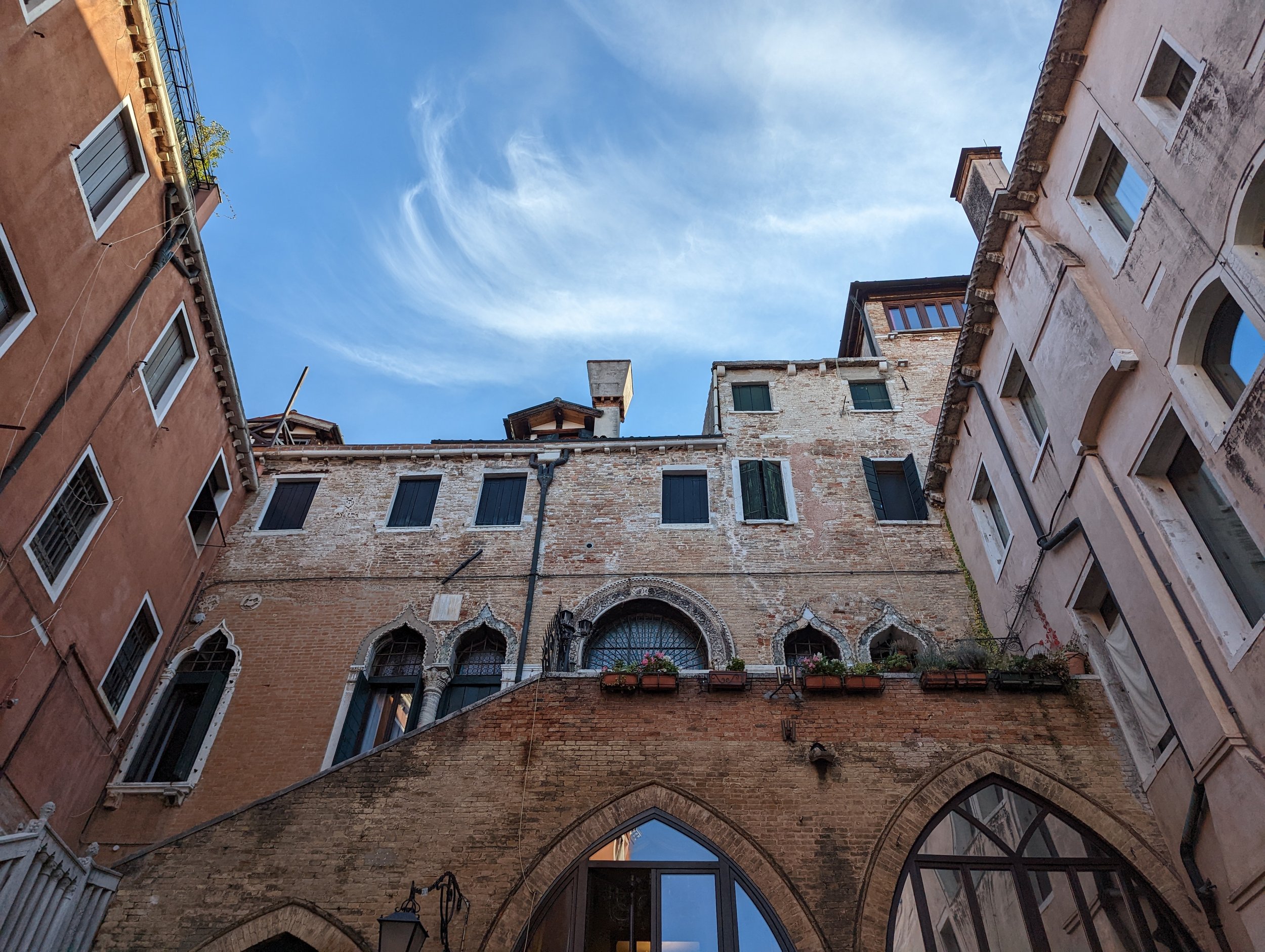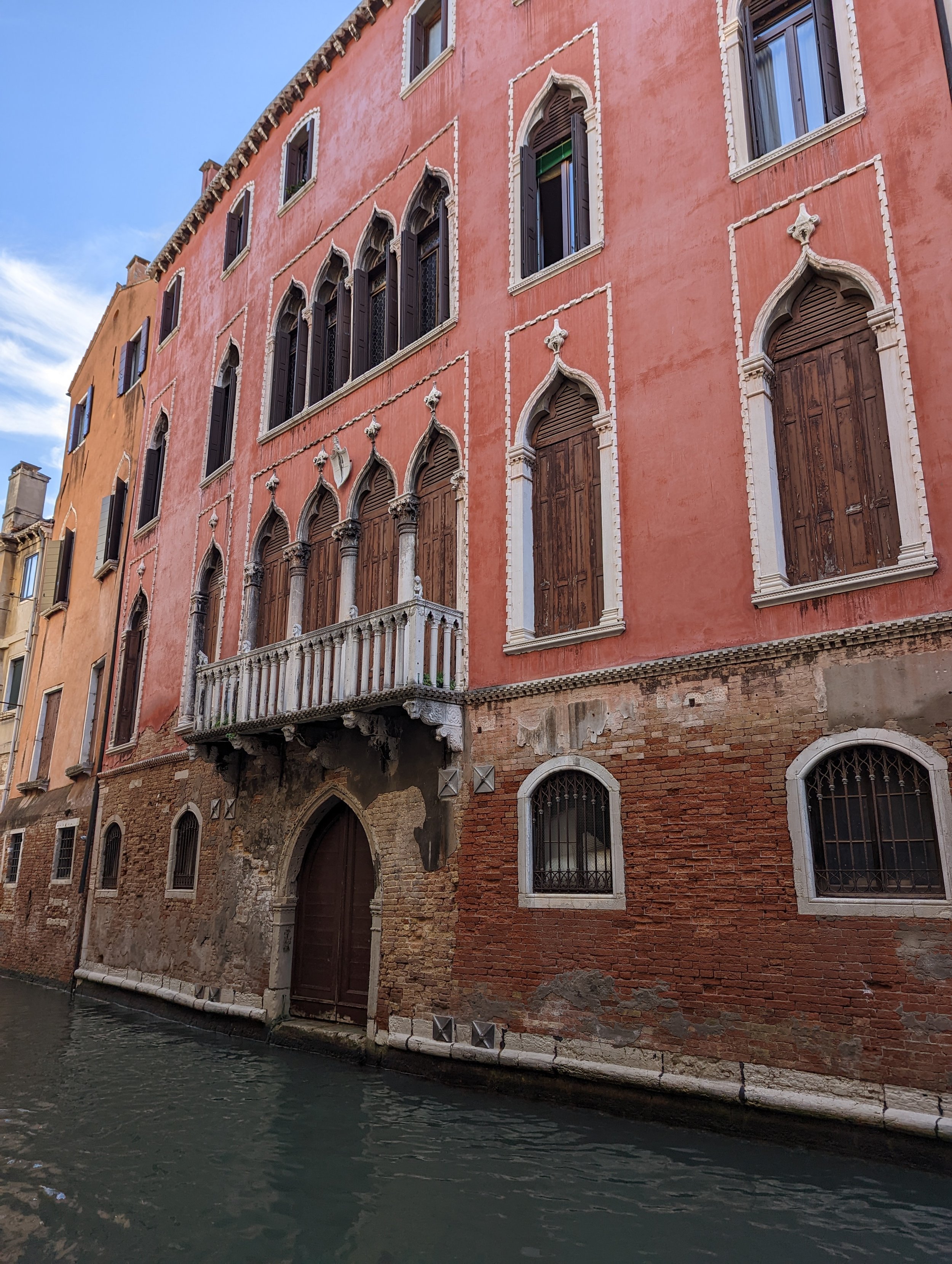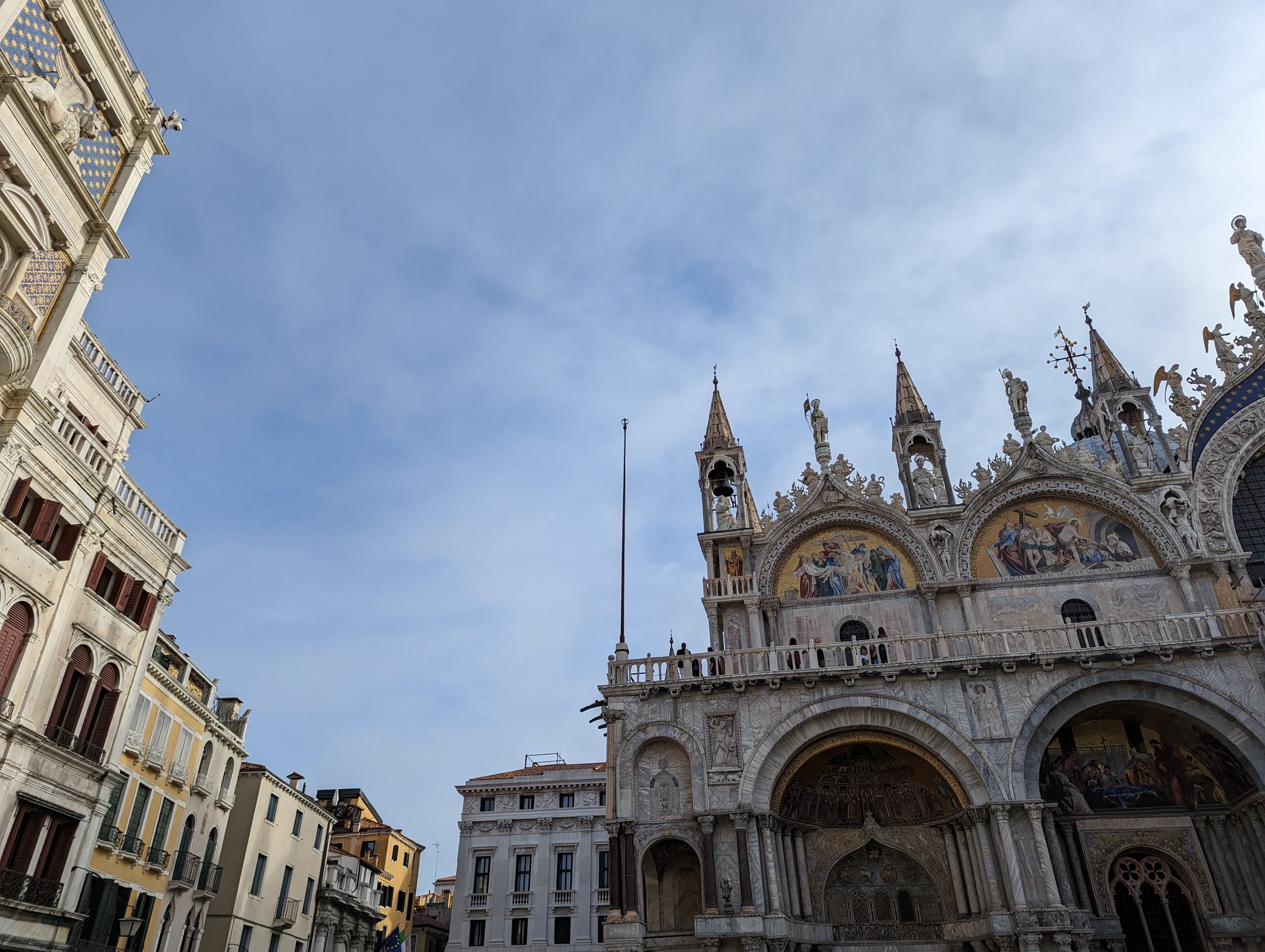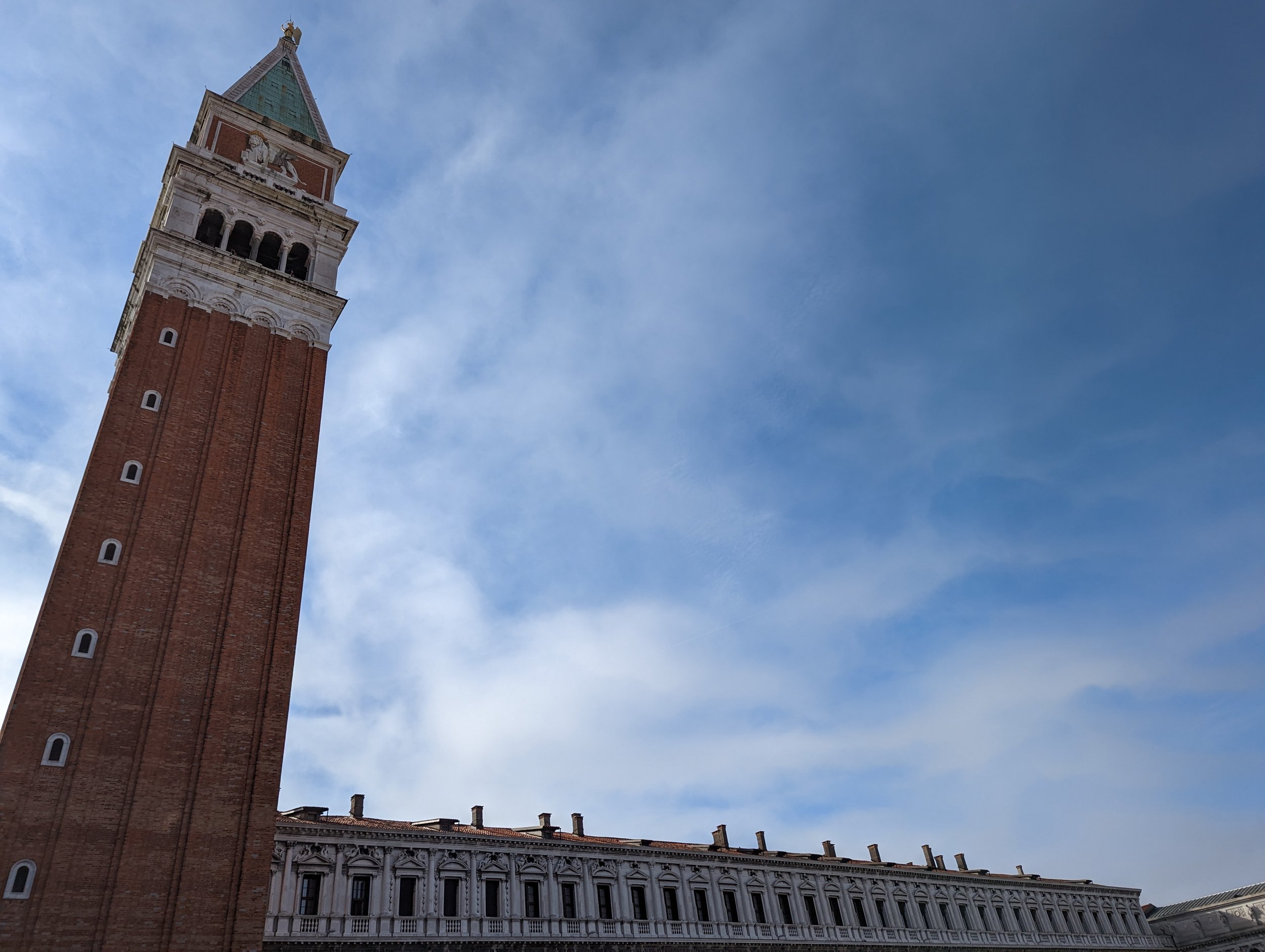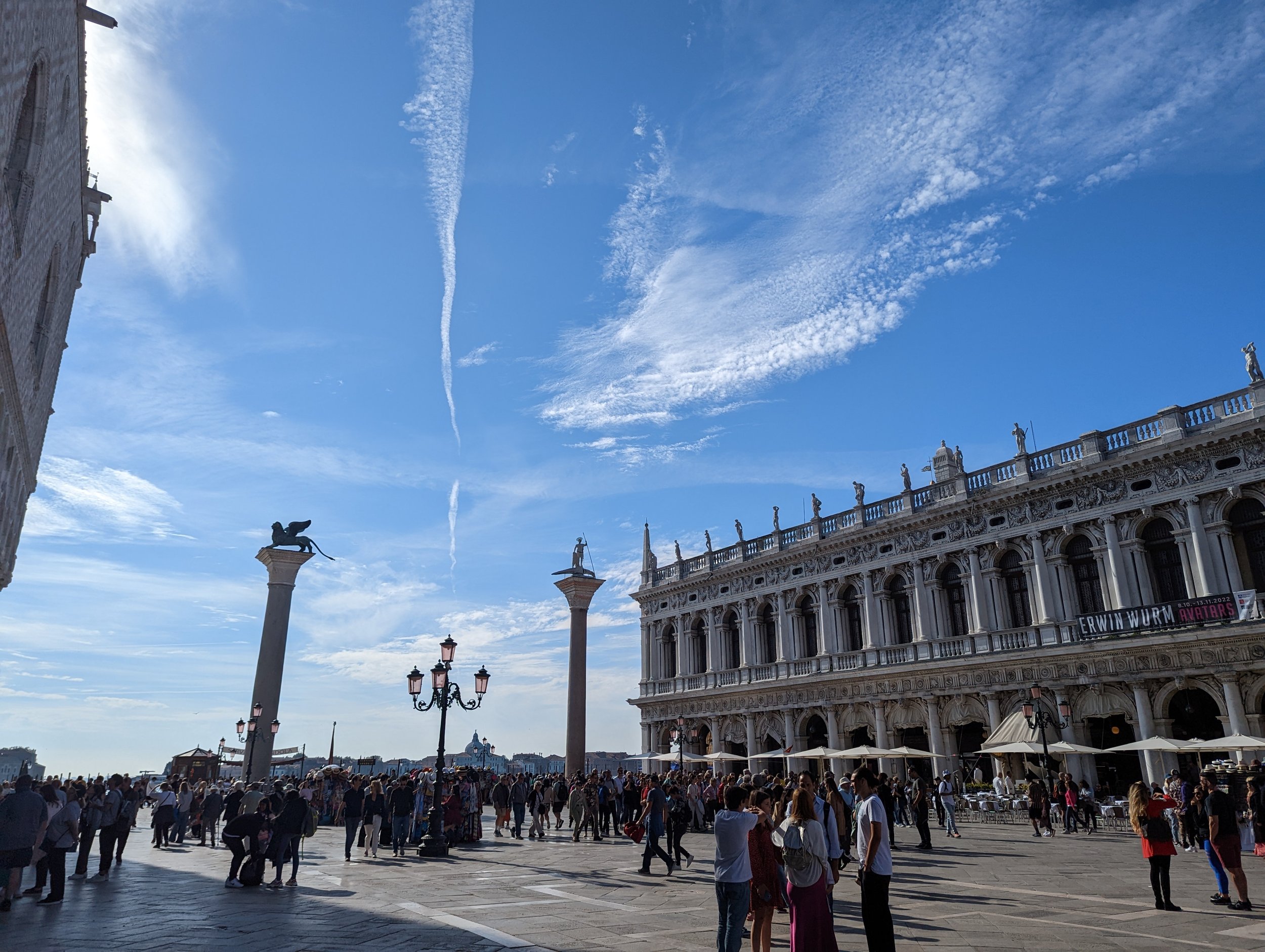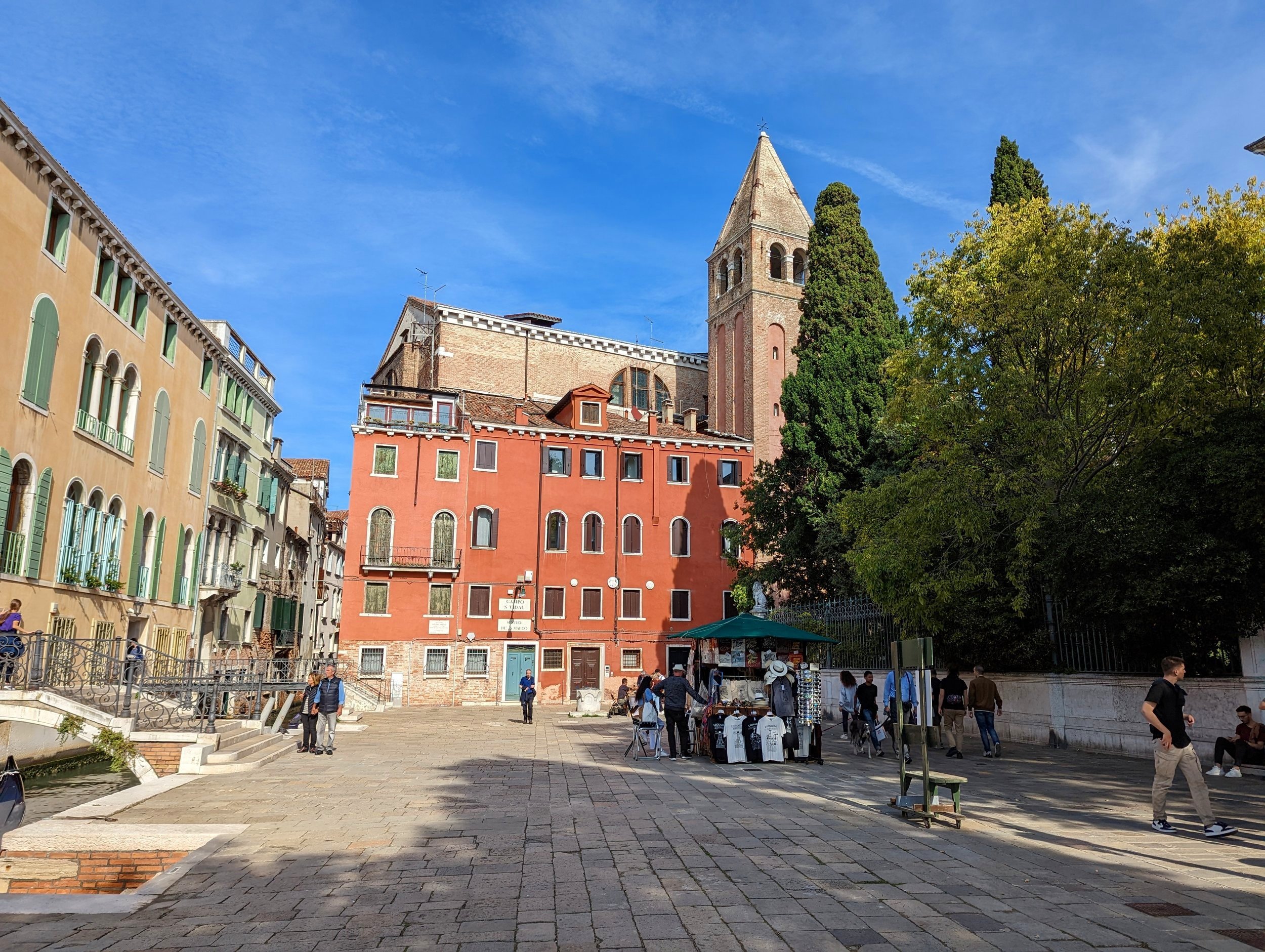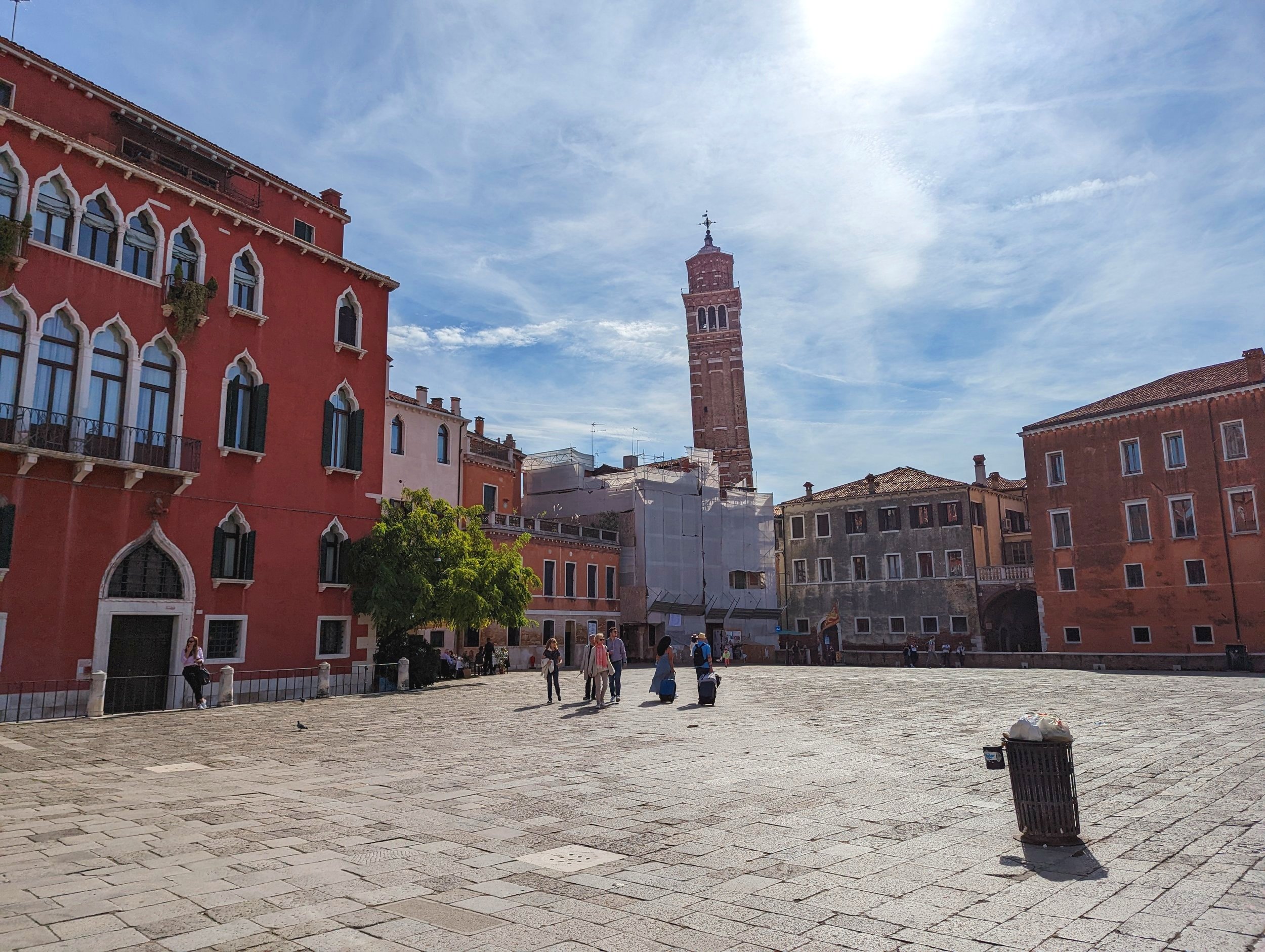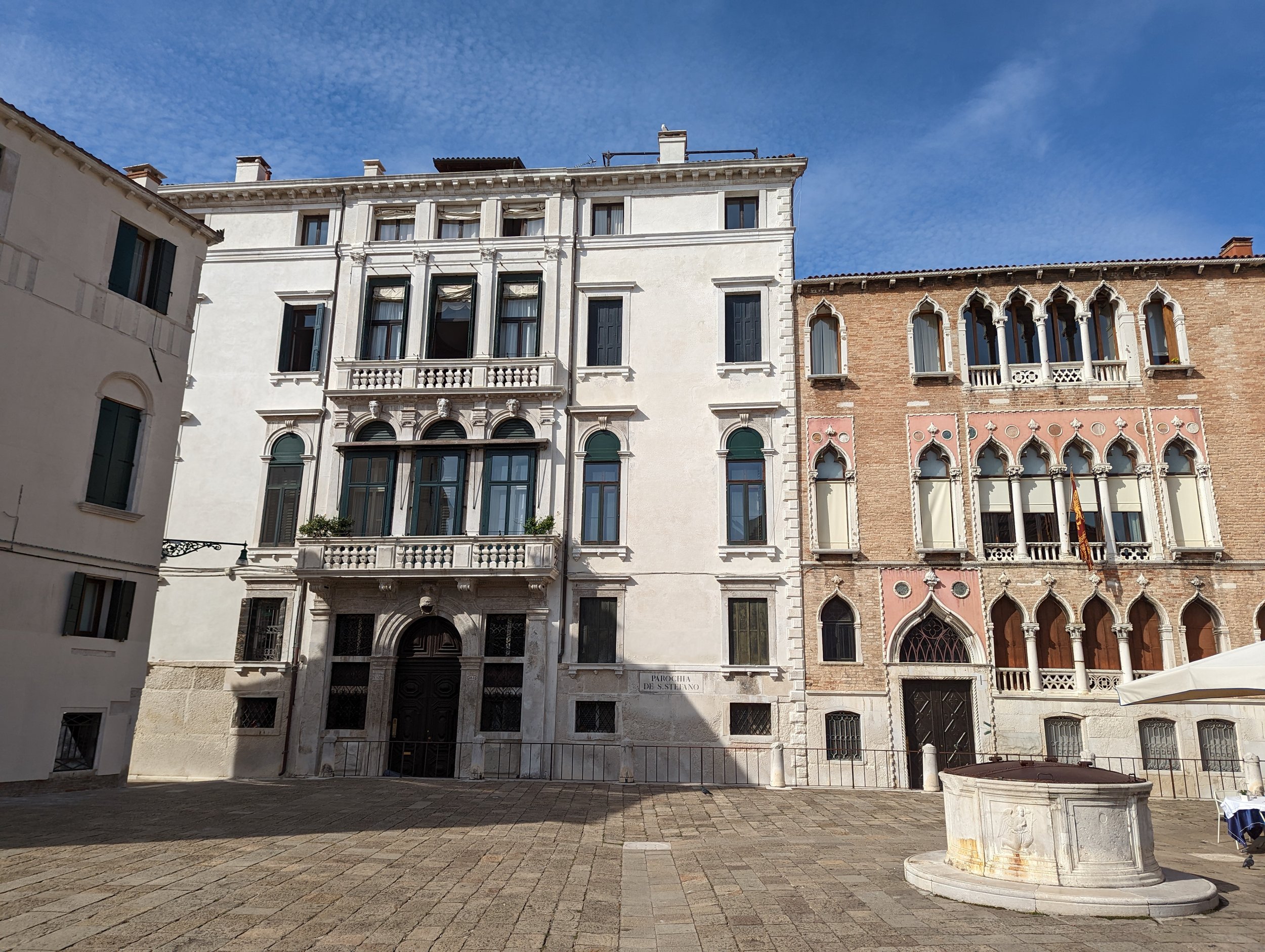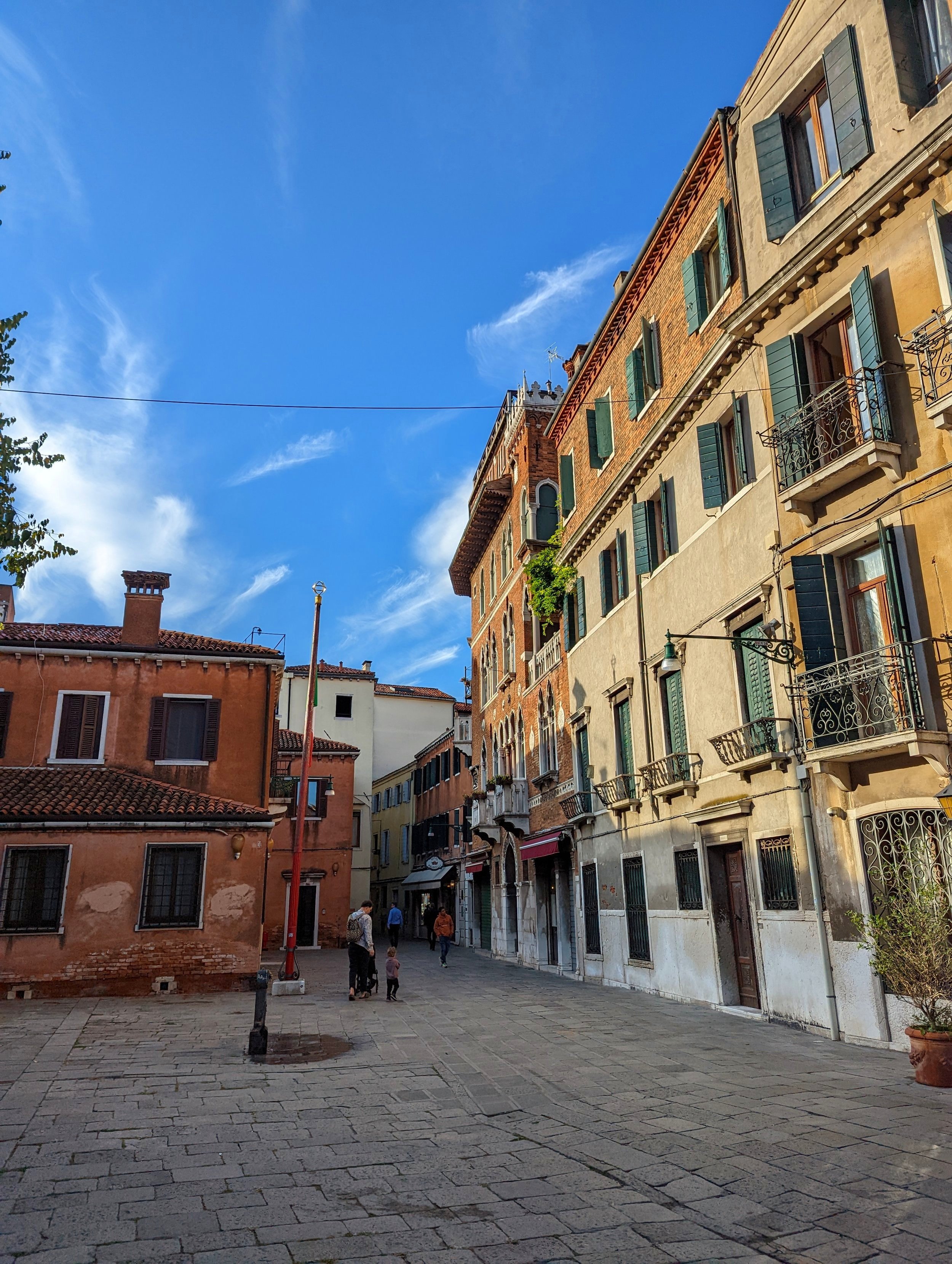Gondolas, Gelato, and Getting Lost in Venice, Italy
The last time I was in Italy, I was a 20-year-old study abroad student trying to save spare cash by train- and hostel-hopping through a three-day jaunt to the Cinque Terre with a couple of friends. Our trip included a mashup of mishaps, from getting stranded between trains at a station where no one spoke English to missing our early connection back to Pisa (and subsequently, never seeing the leaning tower of Pisa despite flying in and out from that city).
Seven years later, as part of a post-pandemic return to the travel lifestyle, I was back — this time, in Venice — on the start of a 10-day European journey with EF Ultimate Break.
Flying from Paris to Venice over the Italian Alps
It had been a long five years since the last time I’d traveled alone outside the US, during which time I’d moved twice, earned two degrees, added three jobs to my resume, and acquired an alarming number of pets (and plants). Still, despite life being full and exciting, I’d been feeling like something was missing — exploration.
In January 2020, my partner and I had booked our first international trip together to London. For him, it would be the first time out of the States, and for me, it would be a homecoming of sorts, a return to my study abroad roots and host family.
Unfortunately, all plans in 2020 crashed to a halt, and our London trip was postponed once, twice, and finally cancelled, swapped for some non-refundable airline travel vouchers that were continually extended.
The story does have a happy ending. In the spring of 2022, we were finally able to cash in those travel vouchers for our first trip together to Ireland — another much-beloved destination I’d visited as a student — where travel restrictions were lighter than the UK.
But a year before that, still stuck in my apartment and at my desk every day, waiting for the world to reopen, I decided I needed to do something daring to rescue my state of mind. So I went online and booked myself a solo trip to Italy, Austria, Germany, and Switzerland for the following autumn. What was the worst that could happen? If it was postponed, it would be postponed. Better than sitting in limbo forever, dreaming about someday.
A beautiful canal view from one of Venice’s many small bridges
Now, someday had finally come. International testing requirements had been lifted for travel to Europe, I had my booster shot, and I was waiting at Venice Marco Polo Airport, bags in hand, to meet my travel mates for the next 10 days.
The flight from Washington Dulles had been long, my layover at Paris Charles du Gaulle stressful and sweaty, but the butterflies in my stomach had finally subsided as our taxi wound through the colorful, sunny streets to our hostel, where we were introduced to the rest of our group — sixteen travelers from ages 21 to 30, who had all flown in from various parts of North America.
That night, as we chatted over garlic bread and lasagna, trailed our tour leader around Venice’s darkened canals, and admired the twinkling lights of the city from a water taxi, I could feel the familiar excitement of exploration bubbling up again.
Exploring Venice on an evening water taxi ride
The next morning, jet lag kicked and nutella croissant in hand, we headed out again from our hostel on the mainland and back to the island city. It was an unseasonably warm, sunny day for early October, and as our open-air water taxi skimmed across the glittering green-blue water, I thought about how the senses had a way of bringing back memories, bringing you back to places.
It had been seven years — and yet the mingled scent of fresh cappuccinos and croissants at breakfast had instantly revived the memory of another morning in the Cinque Terre, waking in a hilltop hostel in Manarola. The brilliant blue and salty spray of the Adriatic sea brought me back to the vast expanse of the Mediterranean, stretching away from me while I waited for a train to the next village, wondering where life would take me. So much had changed since then, but these sensations felt just the same.
By daylight, the colors and complex architecture of Venice were even more dazzling. We wandered across bridges and through narrow alleys on a morning walking tour, talking about how it was so beautiful, it didn’t feel real. Our tour guide pointed out piazzas, bridges, and convents, telling us about the history of this city built on a grouping of more than 100 small islands. Despite its impressive background and incredible views, she told us, Venice does have its drawbacks.
Exploring Venice’s vivid and historic architecture
The buildings are old, and properties are expensive to maintain. In fact, the city itself is becoming so expensive that most young professionals and families prefer the mainland, where they can afford the cost of living and enjoy more modern amenities. Several times a year, often between October and January, the water levels in the Venice Lagoon rise enough to flood the walkable areas of the city — an occurence becoming more frequent as sea levels rise in general. Our guide showed us stacked piles of wooden platforms in the corners of each piazza, which are used to create elevated walkways during flooding. Venice is sinking little by little each year, she said.
As she led us around corners, under awnings, and over canals, it was clear how much she loved her city. I couldn’t help but fall in love with it too, even if the teeming crowds, tourist shops, and street vendors’ carts did give it an air of the chaotic.
(Below) Colorful architecture and azure canals in and around Venezia
After the walking tour and a glass-blowing demonstration, we were given a few hours to wander at will.
Standing in the wide expanse of Piazza San Marco, staring up at the spires of St. Mark’s Basilica, I wanted nothing more than to immerse myself in the art and history of this incredible city, wandering under domed ceilings that had stood for centuries. But the surge of other tourists proved to be an obstacle to my daydreams — the line to St. Mark’s Basilica and Museum snaked around the back of the building and along the canal, promising a wait of more than an hour when we only had a few more to spare.
It was hard to believe that tomorrow, I’d be on a bus headed to the next country. I decided to make the most of today.
(Above and below) St. Mark’s Basilica and Piazza San Marco
(Below) A few of the piazzas — or open squares — in Venice
Inside Libreria Acqua Alta, known as Venice’s most beautiful bookstore
Together with a few friends from my group, I explored Venice at a slower pace, trying to drink it all in, to imprint it into my memory.
We drifted in and out of little shops, admiring handcrafted wallets and glass-blown goblets.
We meandered through the Libreria Acqua Alta, Venice’s famous “high water” bookstore, where books are piled to the ceiling, stacked in gondolas, and shaped into a wall in the back garden.
We stopped for lunch in a cafe in the middle of a piazza, soaking in the warm hues of the architecture around us while scooping fresh, melting pizza into our mouths.
We passed by stripe-shirted gondaliers beckoning us into their boats, although we didn’t take a ride.
We stopped for photos along the backdrop of the turquoise canals, crossed small and wide bridges, and trekked to the other side of the city to try a gelateria our local tour guide had recommended.
Wandering along the promenade in the sunshine, licking my lemon gelato, I felt like I was living in the perfect moment.
Then we got lost.
We were meeting our group back at the Piazza San Marco, which I’d assumed was an easy straightaway from where we were now. I could see the spires of St. Mark’s Basilica ahead along the water, right down the promenade. But the stones beneath our feet came to a sudden stop, intersected by a canal. We circled back and turned right, but were met with another canal.
I’d bought an international sim card so my phone would have data, but Google Maps refused to cooperate anyway. As the blue dot jumped around randomly on my screen, I tried to retrace my steps, remembering that the last time I was in Italy, I had no WiFi at all. I could do this. The trouble was that we were running out of time — time that we’d spent so leisurely meandering along the water, when we thought we’d make it easily to the meeting point before our group left on a water taxi back to the mainland.
Hurrying now, pushing through thick crowds of tourists and feeling the sun beat down on my head, I realized one of my travel friends and I had completely lost our other three companions. My sense of urgency mixed with guilt, embarrassment, and a rising flood of fear. We turned a corner, hit a dead end, turned back. Canal. Dead end. Canal.
Even if you have a hardwired sense of direction, Venice does not make sense. There are no connecting streets, no grid patterns, no traffic lights. The city is a maze of canals and narrow alleys that seem to match up haphazardly, especially for a tourist. We started to run, circling the same piazza until we finally found the right way out, dodging shoppers and slow walkers, not wanting to admit our panic to each other. When — somehow — we arrived back at Piazzo San Marco in time, we were out of breath and almost dizzy with relief. Our other friends had made it back before us, which served me right for rushing ahead.
Our group leader took one look at my red, sweating face and said he forgave us immediately for being a few minutes late.
Speeding away from the city of Venice via water taxi
On the water taxi back, with Venice receding behind us, I tried to calm my heartbeat as I turned my face into the cool wind. Traveling sometimes throws you into scary situations like this, I knew. Sometimes it’s surreal and magical, and the next moment it’s unfamiliar and overwhelming. But always, it makes you feel alive.
And I was ready for the next adventure.





